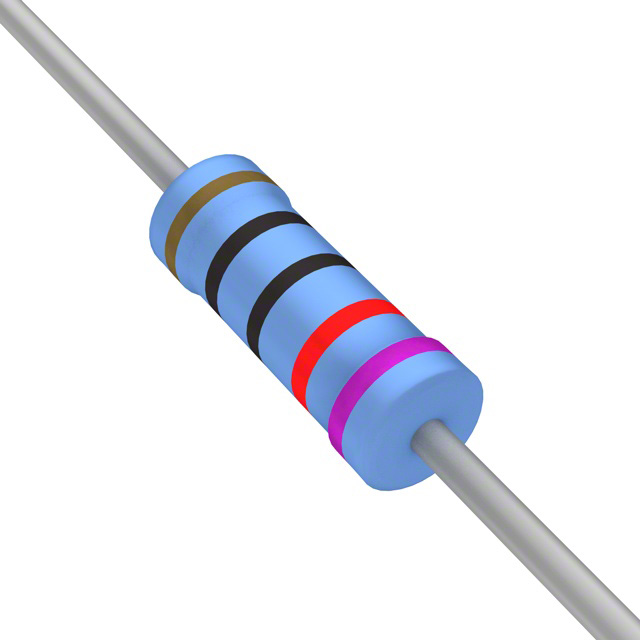

What is a Load Resistor? [Everything You Need to Know]
Catalog
What is a Load Resistor? [Simple Definition]How Does a Load Resistor Work?Types of Load ResistorsApplications of Load ResistorsWhy Are Load Resistors Important?What’s the Difference Between a Resistor and a Load Resistor?Frequently Asked QuestionsFinal VerdictRelated ArticlesLoad resistors are used to control the flow of current by adding resistance to a circuit. For example, if you're using high-wattage light bulbs, a load resistor can help prevent your wiring from overheating since those bulbs can pull a lot of current. Below, I’ll share some tips on picking the right load resistor for your setup and answer a few common questions about them. If you're wondering, "What exactly is a load resistor?"—this is the article for you!

Load Resistor
What is a Load Resistor? [Simple Definition]
In electronics, load resistors play a key role in managing voltage. By adjusting resistance, they protect other components, regulate current flow, and stabilize voltage. They can even help dissipate heat or prevent electrical surges. Adding a load resistor to a circuit increases resistance, which in turn reduces voltage. This principle can be handy for things like dimming LED lights or lowering a device's power usage.
How Does a Load Resistor Work?
A load resistor works by converting some of the electrical energy in a circuit into heat. When electricity flows through it, the resistor generates heat depending on its resistance level.
Since components like transistors and diodes can be sensitive to voltage or current spikes, load resistors are often used in circuits with these parts. By stabilizing those levels, load resistors help prevent damage and ensure the circuit runs smoothly.
Types of Load Resistors
Now that you know what a load resistor is, let’s look at the main types. There are two categories: linear load resistors and nonlinear load resistors. Each type has unique characteristics, and choosing the right one depends on your specific needs.
Non-linear Load Resistors
Non-linear load resistors are made from materials like semiconductors, where the resistance changes based on the voltage applied. This means their behavior depends on the voltage. These resistors are often found in circuits where voltage drops need to be adjustable, like in power supplies.
Linear Load Resistors
Linear load resistors are the most commonly used type. They’re typically made of carbon or metal, which have a fixed resistance value. No matter how much current or voltage is applied, their resistance stays constant. These resistors are ideal for circuits that need a steady voltage drop—think LED lights. However, they’re only useful when a fixed resistance value is required.
Applications of Load Resistors
Load resistors are used across a wide range of industries. Here are some key examples to give you a better idea:
LED Lights
Load resistors play a crucial role in LED lighting. For instance, most LEDs in cars operate at around 1.2V, but the vehicle’s electrical system often runs at a much higher voltage. Without a load resistor, the LEDs could burn out. Adding a load resistor in series with the LED prevents this issue, ensuring the LED can handle the voltage safely.
Load resistors also help dim LED lights by adjusting the resistance, which changes their brightness. They can even stop LEDs from flickering—when current flows through a resistor, it causes a voltage drop. This drop can sometimes lead to flickering, but a properly chosen resistor can stabilize the light output.
Signal Conversion
In signal conversion, load resistors are essential. They’re used to convert current signals into voltage signals, making it easier for other devices in the circuit to understand and work with the signal.
Energy Management
Load resistors are great for dissipating excess electrical energy in applications where voltage surges could cause damage. For example, in LED systems, they help protect against sudden spikes in voltage that could harm the LEDs.
Why Are Load Resistors Important?
Load resistors are vital for regulating electrical currents in a circuit. They keep sensitive components safe and ensure the circuit operates smoothly and efficiently.
In automotive systems, they’re especially handy. Without them, low current flow in LED lighting could cause issues like "hyper blinking" (rapid blinking). Load resistors fix this by balancing the current properly.
What’s the Difference Between a Resistor and a Load Resistor?
A regular resistor is a general-purpose component used to control current and voltage in a circuit, while a load resistor has a more specific job—it’s designed to dissipate excess current in a circuit. For instance, LEDs use much less energy than traditional incandescent bulbs, so a load resistor is often added to prevent the LEDs from burning out too quickly by managing the current flow.
Load resistors can also work as voltage dividers in parallel circuits. By using a load resistor this way, you can adjust the circuit’s overall voltage. This makes load resistors especially useful in LED lighting applications where efficiency and precise control are key.
Frequently Asked Questions
What’s the purpose of a load resistor?
A load resistor helps match impedance, transfer maximum power, and minimize excess current flow while improving output stability. It can either increase or decrease the power delivered to the load at a circuit’s output, depending on what’s needed.
Are load resistors necessary?
A: Yes, in some cases. For example, if you can’t replace the flasher unit or find a suitable VLEDS replacement, load resistors are essential. They “trick” the flasher unit by simulating the original load, ensuring everything functions correctly.
Final Verdict
So, can load resistors improve your circuit? Absolutely! They’re often connected to a circuit’s output to stabilize the performance and match impedance. Adding a load resistor can solve common problems and enhance your circuit's reliability.
Hopefully, this article has cleared up any confusion you had about load resistors, their applications, and their importance. If you still have questions, feel free to drop them in the comments. Thanks for reading!
Related Articles
What Ballast Resistor is and How It works
Subscribe to JMBom Electronics !













